I think something wrong with my Keras multiple outputs coding, which causes a high loss comparing with the Sequential model. Please help me out which part of it is wrong.
import os, random, string, pandas, math, numpy
import tensorflow as tf
from tensorflow import keras
Training data:
feature_data = [] # common feature data
label_data = [] # for multiple outputs
single_data = [] # for single output
size = 10000
features = ['x1', 'x2']
labels = ['y1', 'y2']
for i in range(size):
a = random.random()
b = random.random()
c = math.sin(a)
d = math.cos(b)
feature = [a, b]
label = [c, d]
feature_data.append(feature)
label_data.append(label)
single_data.append(c)
This is my single output model, which is working well: loss < 2e-05
single = keras.Sequential([
keras.layers.Dense(2, input_shape=(2,), activation=tf.nn.softmax),
keras.layers.Dense(4, activation=tf.nn.softmax),
keras.layers.Dense(1)])
optimizer = tf.optimizers.RMSprop(learning_rate=0.001)
single.compile(loss='mse', optimizer=optimizer, metrics=['mae'])
single.fit(x=feature_data, y=single_data, epochs=100, batch_size=100)
This should be the identical multiple output model, but the losses are really high: 0.1
def build_model():
input_shape=(2, )
inputs = keras.Input(shape=input_shape)
outputs = []
for label in labels:
u = keras.layers.Dense(2, input_shape=input_shape, activation=tf.nn.softmax)(inputs)
v = keras.layers.Dense(4, activation=tf.nn.softmax)(u)
w = keras.layers.Dense(1, name=label)(v)
outputs.append(w)
model = keras.Model(inputs = inputs, outputs = outputs)
optimizer = tf.optimizers.RMSprop(learning_rate=0.001)
model.compile(loss='mse', optimizer=optimizer, metrics=['mae'])
return model
model = build_model()
model.fit(x=feature_data, y=label_data, epochs=100, batch_size=100)
I guess that something wrong with the input layer, or the label data format, but still have no idea how to fix it. Please help.
